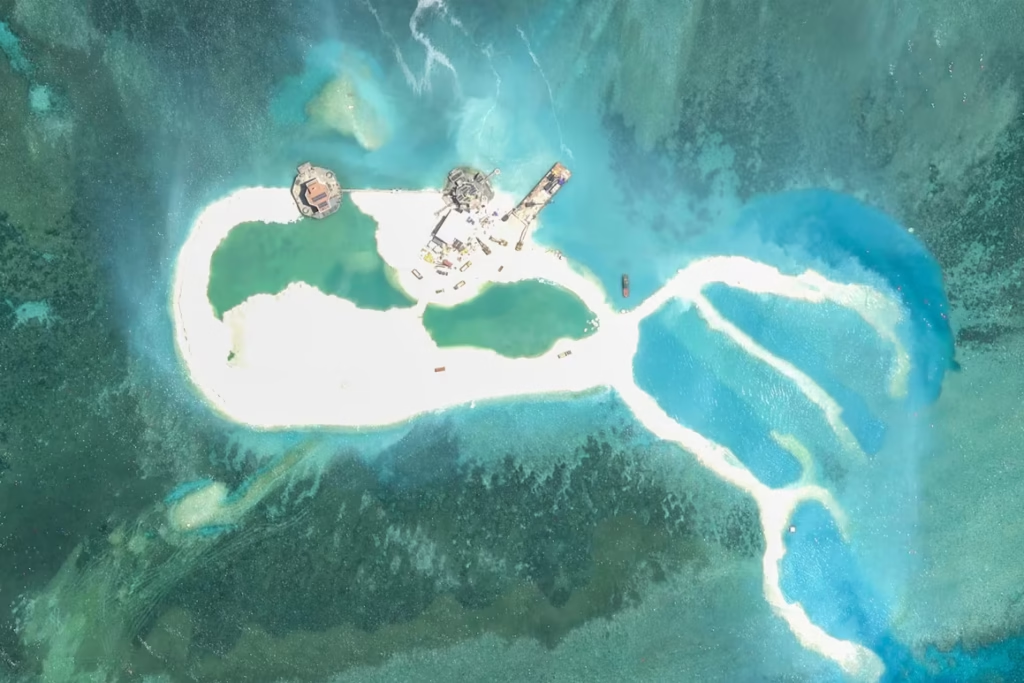Vietnam is rapidly expanding its presence in the disputed South China Sea, with new satellite imagery revealing large-scale land reclamation projects that could soon surpass China’s efforts in the region. The developments, centered in the Spratly Islands, highlight Hanoi’s growing determination to secure its territorial claims in one of the world’s most contested waterways.
According to analysis by the Asia Maritime Transparency Initiative, Vietnam has recently carried out dredging and land reclamation at eight new reef sites, including Alison Reef, Collins Reef, East Reef, and Landsdowne Reef. This surge has brought Vietnam’s total artificial land mass in the Spratlys to about 70% of China’s footprint, with experts predicting it may soon overtake Beijing’s scale of reclamation if current trends continue.
Vietnam now has man-made land on all 21 features under its control, with some areas being reinforced for strategic use. Reports indicate that munitions storage facilities are under construction, though limitations in geography mean that full-length runways may be restricted to only one location—Barque Canada Reef.
China, which claims nearly the entire South China Sea, has strongly condemned Vietnam’s actions, branding them illegal and provocative. The South China Sea remains a flashpoint of geopolitical rivalry, with trillions of dollars in trade passing through its waters each year.
The implications of Vietnam’s accelerated island-building are far-reaching:
- Strategic Balance: By increasing its reclaimed land, Vietnam strengthens its ability to deter and respond to Chinese assertiveness.
- ASEAN Dynamics: Other Southeast Asian claimants, such as the Philippines and Malaysia, may view Vietnam’s assertiveness as both a challenge and a potential balancing force against Beijing.
- Risk of Militarization: The construction of storage and defensive infrastructure raises concerns that the Spratlys could see heightened militarization.
- Global Diplomacy: The expansion comes as the United States and its allies deepen ties with regional partners, further complicating the strategic calculus.
Vietnam’s move underscores a larger reality: the South China Sea dispute is no longer just about fishing grounds or shipping routes—it is about long-term control, security, and influence. As Vietnam ramps up construction, tensions with China and within ASEAN are likely to intensify, setting the stage for a new chapter in one of Asia’s most volatile disputes.


